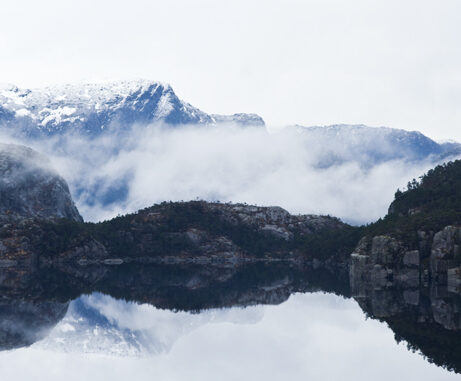
A guide to Stavanger, Norway
Ever thought about visiting Norway? Read on for a guide to the charming city of Stavanger
The lake (Breiavatnet) at the centre of Stavanger
I had researched Stavanger before my arrival there, yet still wasn’t expecting the calm and peaceful atmosphere that awaited me in the fourth largest city in Norway. With a population of just over 100,000 it felt more like a large town and this instantly made me feel more at home. There was still a wealth of things to do, places to eat, streets to explore and attractions to visit, but everything in the city was within walking distance and although at times it was busy, it didn’t have the hectic hustle and bustle of any of the big cities in the UK – a refreshing change.
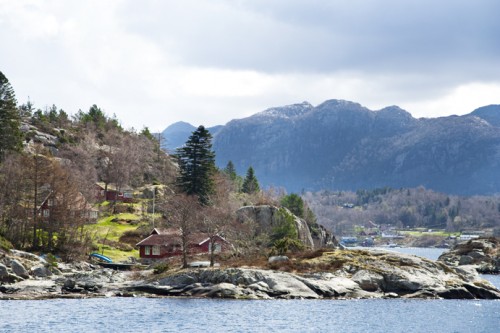
Holiday homes in the Stavanger region
Travel and accommodation
It was April when my boyfriend and I stayed in Stavanger, which turned out to have both its good and bad points. Due to it being in-between the winter and summer seasons, there were a lot of summer attractions that weren’t open or available and some things that you couldn’t do outside of winter such as ice skating on one of the local lakes. However, we never struggled to find things to do and it was a bit quieter thanks to the time of year. The weather was also relatively mild – still cold enough to have to wrap up but I happily spent most of my time outside. Travelling in early April also meant that flights were fairly cheap, especially booking them months in advance. We travelled with the airline Norwegian (www.norwegian.com), which cost just over £200 including baggage for return flights from London for two people. A shuttle bus runs a loop from the airport entrance to Stavanger (NOK 150/approx. £16 for a return) and is the easiest and cheapest option if you don’t have a car.
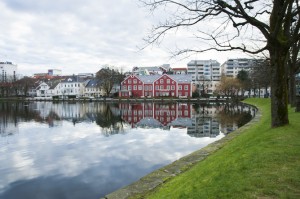
There are numerous hotels in Stavanger but ideally we were looking to find a guesthouse where we would get more of a genuine feel of what life in Stavanger is like. Tone’s Bed & Breakfast (www.tone.ms11.net) is a small but perfectly formed guesthouse only five minutes walk away from the city centre. Both the interior and exterior are a stunning example of Norwegian living. It cost NOK 500 (approx. £55) per night for a double room and NOK 350 (approx. £38) for a single, including breakfast. The owner, Tone, was welcoming and helpful throughout our stay and even gave us money off, as she wasn’t there one morning to make us breakfast. The advantage of staying in guesthouses is that you get a sneak peak in to the lives of those in a different county, and the majority of the time your host will be happy to help you out with directions and advice.

A house in the Stavanger region
Stavanger city centre
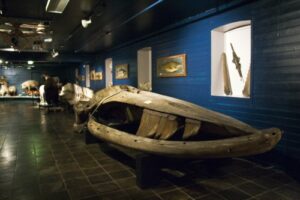 The centre of Stavanger couldn’t be more picturesque, with a cathedral, built in the middle ages, and rows of buildings looking out on to a small lake (Breiavatnet). The bus and train station are also next to the lake and are a great way to travel if you don’t have a car with you. There are also many museums to visit such as the Canning Museum and the Maritime Museum, most of which are part of Museum Stavanger (MUST) (www.museumstavanger.no). Unfortunately we didn’t have time to visit them all, but we did explore Stavanger Museum (free entry), which houses some fascinating and sometimes a little scary stuffed animals and skeletons. It also has temporary exhibitions (you have to pay for these) such as the deep-sea photography exhibition that was on when we visited. There is an information centre directly behind the cathedral that offers a vast array of maps (very useful!) and leaflets. The staff are very helpful, speak good English and can tell you about day trips and places to visit depending on what you’re looking for. If you want more information before you travel to Norway, I found these two websites helpful (www.regionstavanger.com and www.visitnorway.com).
The centre of Stavanger couldn’t be more picturesque, with a cathedral, built in the middle ages, and rows of buildings looking out on to a small lake (Breiavatnet). The bus and train station are also next to the lake and are a great way to travel if you don’t have a car with you. There are also many museums to visit such as the Canning Museum and the Maritime Museum, most of which are part of Museum Stavanger (MUST) (www.museumstavanger.no). Unfortunately we didn’t have time to visit them all, but we did explore Stavanger Museum (free entry), which houses some fascinating and sometimes a little scary stuffed animals and skeletons. It also has temporary exhibitions (you have to pay for these) such as the deep-sea photography exhibition that was on when we visited. There is an information centre directly behind the cathedral that offers a vast array of maps (very useful!) and leaflets. The staff are very helpful, speak good English and can tell you about day trips and places to visit depending on what you’re looking for. If you want more information before you travel to Norway, I found these two websites helpful (www.regionstavanger.com and www.visitnorway.com).

The city centre is full of cobbled streets winding their way down to the harbour and lined with clothes shops and fantastic eateries. My favourite street by far and one you can’t afford to miss was Øvre Holmegate, “the colourful street”. The cafés, shops and boutiques are painted in an array of fresh pastel colours and it gives the whole place a great atmosphere. A delightful café on this street that was packed every day of our stay (we only managed to find a seat in there once!) is Bøker & Børst. They sell delicious coffee and have shelves bursting with books; it would be easy to spend hours sat in there relaxing. However, my favourite place by far has to be Sjokoladepiken (also very busy!), the best café I have ever been to. They sell beautifully crafted chocolates of all kinds and a wide range of teas, coffees, soft drinks and alcohol. The warmth and smell of chocolate hits you as you walk through the door and I spent hours chatting away late in to the night on numerous occasions over a mug of luxurious hot chocolate and homemade marshmallows – perfect.
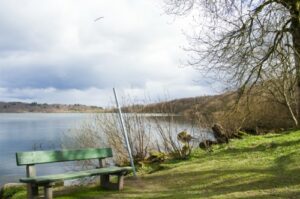 If you are on a budget whilst in Stavanger it can be difficult to find places to eat, but not impossible. It takes a while to get used to the difference in prices if you are used to the cost of things in the UK, so I would highly recommend taking double the amount of money than you’d planned, I guarantee you’ll probably need it. Café Sting is a reasonably priced restaurant and a favourite with the locals, situated on top of the hill next to Valbergtårnet (the Valberg tower) and offers a great view over the city. If you opt for some cheap food, don’t make the mistake of treating yourself to some wine as we did – our bill came to about £60 for a burger, a pizza and two very small glasses of wine! We also ate at Al Forno (Skagen 15– just back from the waterfront where all the bars are), an Italian restaurant that sells wonderful pizzas at great prices. My favourite place to eat was the pub and restaurant Phileas Fogg (Skagen 27, just down the road from Al Forno) that has a wide range of dishes and gives the option of buying small portions for cheaper as well as the full-size dishes. The portions are generous though and I had my first taste of something traditional and very tasty – a creamy fish soup with catch of the day and fresh bread (NOK 159). There are many other restaurants especially by the harbour that sell fantastic food, but where you go completely depends on your budget, it’s worth just having a wander and seeing what is suitable for you.
If you are on a budget whilst in Stavanger it can be difficult to find places to eat, but not impossible. It takes a while to get used to the difference in prices if you are used to the cost of things in the UK, so I would highly recommend taking double the amount of money than you’d planned, I guarantee you’ll probably need it. Café Sting is a reasonably priced restaurant and a favourite with the locals, situated on top of the hill next to Valbergtårnet (the Valberg tower) and offers a great view over the city. If you opt for some cheap food, don’t make the mistake of treating yourself to some wine as we did – our bill came to about £60 for a burger, a pizza and two very small glasses of wine! We also ate at Al Forno (Skagen 15– just back from the waterfront where all the bars are), an Italian restaurant that sells wonderful pizzas at great prices. My favourite place to eat was the pub and restaurant Phileas Fogg (Skagen 27, just down the road from Al Forno) that has a wide range of dishes and gives the option of buying small portions for cheaper as well as the full-size dishes. The portions are generous though and I had my first taste of something traditional and very tasty – a creamy fish soup with catch of the day and fresh bread (NOK 159). There are many other restaurants especially by the harbour that sell fantastic food, but where you go completely depends on your budget, it’s worth just having a wander and seeing what is suitable for you.
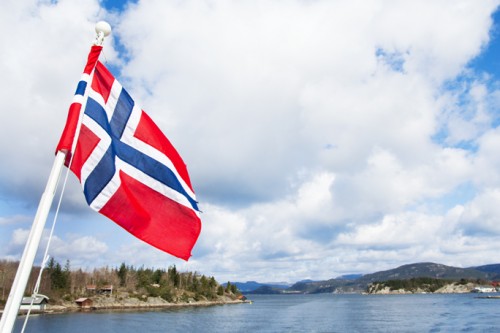
On the cruise to the Lysefjord
Day trips from Stavanger
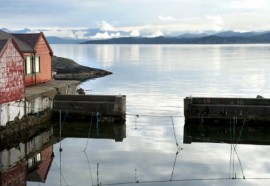 Determined to spend most of my time outside enjoying the stunning scenery Norway has to offer, we spent almost all day every day walking. What I wasn’t expecting were so many different types of landscapes. From enormous snow-capped mountains to the beautiful hidden lakes that nestle high up between them, from the serene, isolated beaches to lush woodland, Stavanger and the surrounding areas seem to have everything you could possibly want. A nice local walk to do is around the lake Mosvatnet, a short walk from of the city centre (www.stavangerexpats.com/mosvatnet). The 3-4km track around the lake is all on flat terrain and is an easy, relaxing walk to do that is popular with runners and cyclists. The track passes the Stavanger Art Museum, which houses a small art collection as well as a lovely shop and café. A slightly longer trip is a costal walk around the edge of the city that took about half a day. The path is steep in a couple of places but is mostly easy to walk. We walked out of the centre to the boat harbour at Hillevågsvatnet and followed the trail along the coast. You get stunning views across the fjords to the mountains and there is gorgeous countryside and some hidden beaches en route where you can take a break.
Determined to spend most of my time outside enjoying the stunning scenery Norway has to offer, we spent almost all day every day walking. What I wasn’t expecting were so many different types of landscapes. From enormous snow-capped mountains to the beautiful hidden lakes that nestle high up between them, from the serene, isolated beaches to lush woodland, Stavanger and the surrounding areas seem to have everything you could possibly want. A nice local walk to do is around the lake Mosvatnet, a short walk from of the city centre (www.stavangerexpats.com/mosvatnet). The 3-4km track around the lake is all on flat terrain and is an easy, relaxing walk to do that is popular with runners and cyclists. The track passes the Stavanger Art Museum, which houses a small art collection as well as a lovely shop and café. A slightly longer trip is a costal walk around the edge of the city that took about half a day. The path is steep in a couple of places but is mostly easy to walk. We walked out of the centre to the boat harbour at Hillevågsvatnet and followed the trail along the coast. You get stunning views across the fjords to the mountains and there is gorgeous countryside and some hidden beaches en route where you can take a break.
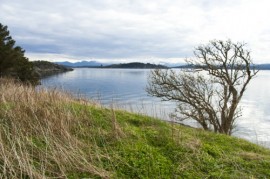
We somehow managed to get completely lost at the end of the trail and had to navigate our way through many streets back to the centre, but it was interesting to see all the different types of houses and the way people live. A day trip that would be especially nice in the summer is the walk along the beaches from Ogna to Brusand, two tiny villages near the coast. We caught the train to Ogna, then the train from Brusand back to Stavanger, which cost about NOK 90 each way. The path isn’t well signposted and we got lost a couple of times, but once you have found your way it’s an easy walk and the beaches are stunning and were deserted when we were there.
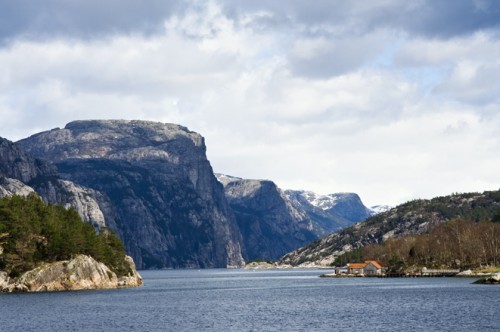
The entrance to the Lysefjord
Preikestolen (the Pulpit Rock)
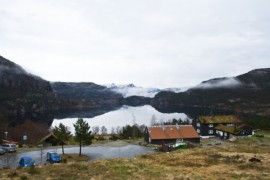 Our final walk was booked online (www.tidereiser.com) before we arrived in Norway – the long hike to Preikestolen. Preikestolen is a huge plateau that hangs 604 metres above the Lysefjord and can be a tough hike for inexperienced walkers. The roundtrip costs NOK 240 for adults and NOK 120 for children. You travel by ferry from Stavanger to Tau, where you continue by bus to a large cabin (with toilets, a café and shop selling hiking gear and lots of plasters) that marks the start of the walk. It is well signposted at the start and all throughout the hike, so it is easy to stay on track. We were told that the hike takes about 2 hours each way though some people do it in an hour each way! It took us about 5 hours overall and it is best to take your time and not rush as there are some tricky paths to navigate. You must take good hiking shoes and clothes, as it can be very chilly at the top. If the hike to Preikestolen sounds like something you want to do, make note of what time of year you are planning to go.
Our final walk was booked online (www.tidereiser.com) before we arrived in Norway – the long hike to Preikestolen. Preikestolen is a huge plateau that hangs 604 metres above the Lysefjord and can be a tough hike for inexperienced walkers. The roundtrip costs NOK 240 for adults and NOK 120 for children. You travel by ferry from Stavanger to Tau, where you continue by bus to a large cabin (with toilets, a café and shop selling hiking gear and lots of plasters) that marks the start of the walk. It is well signposted at the start and all throughout the hike, so it is easy to stay on track. We were told that the hike takes about 2 hours each way though some people do it in an hour each way! It took us about 5 hours overall and it is best to take your time and not rush as there are some tricky paths to navigate. You must take good hiking shoes and clothes, as it can be very chilly at the top. If the hike to Preikestolen sounds like something you want to do, make note of what time of year you are planning to go.
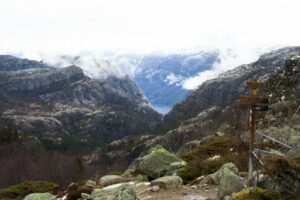 The path isn’t open in winter as it is too dangerous because of the snow and ice. When we did the hike in early/mid-April the path had only been open for the past few weeks and when we neared the top it was a little icy on the path and there was snow on either side that was easily a metre deep. Whatever time of year you decide to go, the scenery will be stunning and the views you get from the top are breathtaking. The aching legs and exhaustion are worth every minute. There is also an option (one that we did the next day) to take the Rødne Fjord cruise that departs the harbour at Stavanger and travels through the Lysefjord and underneath Preikestolen. It departs from Skagenkaien and tickets can be booked on the day as you board the cruise. All passengers are given a leaflet detailing all of the places and sights the cruise passes, and it even stops at quite a few of them. We got to drink from a huge waterfall, feed mountain goats and learn about the history of the local area. Passing underneath Preikestolen is fascinating as you get to see it from a completely different perspective but it was also a little scary to see how high up we were the previous day. The tour takes around 3 hours and is a nice break if you have been doing a lot of walking.
The path isn’t open in winter as it is too dangerous because of the snow and ice. When we did the hike in early/mid-April the path had only been open for the past few weeks and when we neared the top it was a little icy on the path and there was snow on either side that was easily a metre deep. Whatever time of year you decide to go, the scenery will be stunning and the views you get from the top are breathtaking. The aching legs and exhaustion are worth every minute. There is also an option (one that we did the next day) to take the Rødne Fjord cruise that departs the harbour at Stavanger and travels through the Lysefjord and underneath Preikestolen. It departs from Skagenkaien and tickets can be booked on the day as you board the cruise. All passengers are given a leaflet detailing all of the places and sights the cruise passes, and it even stops at quite a few of them. We got to drink from a huge waterfall, feed mountain goats and learn about the history of the local area. Passing underneath Preikestolen is fascinating as you get to see it from a completely different perspective but it was also a little scary to see how high up we were the previous day. The tour takes around 3 hours and is a nice break if you have been doing a lot of walking.
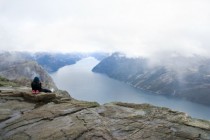

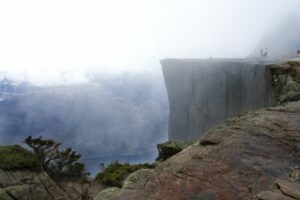
Stavanger is an excellent base when visiting Norway. There are so many things to do both in the city and it’s surrounding areas, which are easy to travel to whether you have a car, prefer public transport or want to walk. This little slice of Norway has made me fall in love with the country and it’s stunning landscapes, and I think if you give it a chance, you will feel the same way.
Article and photographs by Briony Latter

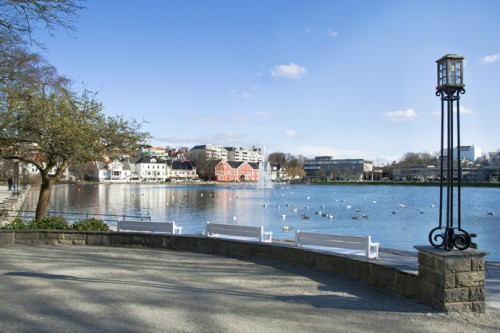
Leave a Reply